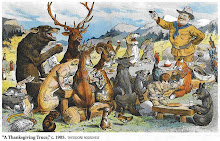New Hampshire Study Documents Higher Bobcat Numbers
A four year trapping and tagging study by the University of New Hampshire and NH Fish and Game is beginning to document a significant comeback in bobcat numbers in the state.As of late last month, UNH faculty and students, trappers and Fish & Game personnel involved in the effort had tagged 12 bobcats, collared them and taken small bits of tissue for DNA testing.Trappers involved with the project are local to the Keene area and willing to help.
Much of the trapping took place once snow was on the ground, noting many bobcats find food more scarce in the winter, lose substantial weight and are more willing to take bait. Only full-grown males, who can take down deer by themselves, make it through winter without struggles, and bobcats are showing up in back yards looking for bird feeders and the like much more frequently than 20 years ago. There has been 170 observation reports recorded the last two years, more or less statewide.
The New Hampshire Fish and Game Department is interested in learning more about the bobcat population, presumably to help guide their wildlife management decisions.As the project is a cooperative effort with Fish & Game, The agency has an interest in how many bobcats the state has compared to surrounding states. The agency hopes that will give it a better sense of how 20 years with protected status affected the animals' distribution and abundance.The return of a healthy bobcat population in New Hampshire is great news. With this new knowledge of bobcat population status and today's sound wildlife management practices and regulation, perhaps bobcats could again be legally harvested by sportsmen in the Granite State










No comments:
Post a Comment